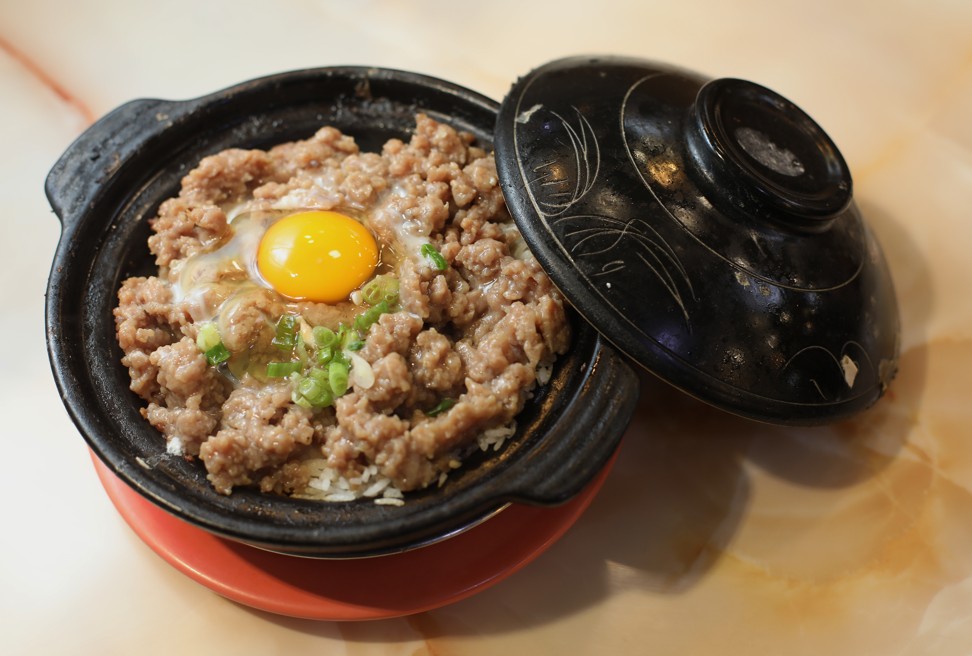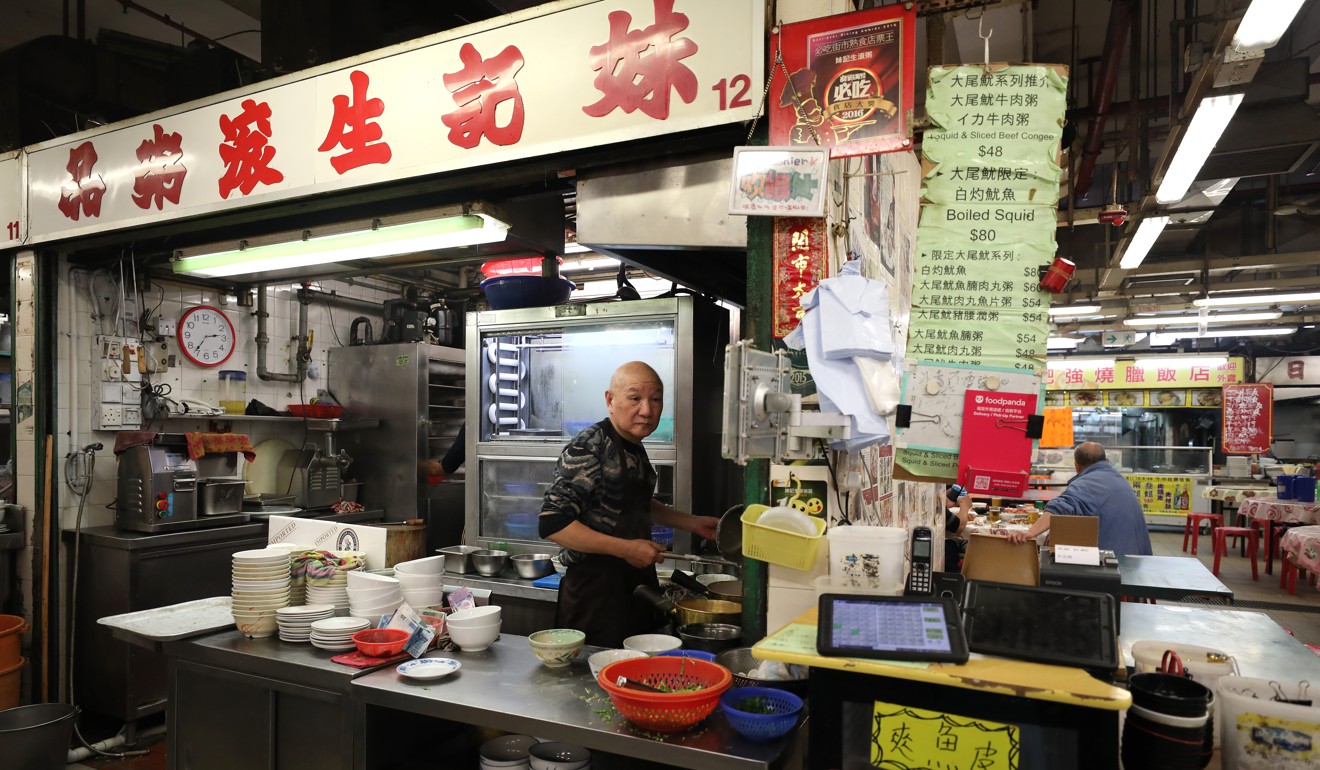
Lamb casserole, congee, snake soup, claypot rice – winter food favourites in Hong Kong, secrets behind them, and some of the best places to eat them
- It’s not been really cold this winter, but that’s unlikely to have dented Hongkongers’ demand for their favourite seasonal dishes
- We learn why some women swear by snake soup to brighten their skin, and discover the precision timing behind dishes such as congee and claypot rice
In other parts of the northern hemisphere, cities are blanketed in snow, flights are delayed or cancelled due to frozen runways, and cold weather warnings are telling citizens to avoid going outside if they can avoid it.
In Hong Kong in early January, it’s 18 degrees Celsius (64 degrees Fahrenheit). Although this would be considered balmy weather in other places in the world, people in the city are wearing fur coats and heavy scarves.
They’re also seeking out Hong Kong’s warming winter dishes.

Chen explains that the process can be split into three steps, depending on the fire temperature: “High fire, then medium and finally low.”

The rice – the long grain variety preferred in Hong Kong for everyday eating – is rinsed well, soaked in water, then drained, to prevent the grains sticking together. It’s then put into the clay pot, covered with water, and boiled with the lid on over a high flame until most of the water is absorbed into the rice.
For an order of lap mei rice, the trinity of “wind-dried” meats – Chinese sausage, liver sausage and cured bacon – are placed on top of the cooked rice and the flame is lowered to medium high.
Chen says: “Medium heat ensures that the rice won’t be overcooked, while the top ingredients are cooked to the proper doneness and their savoury flavours will leak into the rice.” Midway through the cooking, Chen splashes rendered chicken fat over the ingredients, which “helps crisp up the fan chiu”.

Finally, the pot is cooked over a milder heat, to start crisping up the rice crust. “The slow process requires a close eye and an exact command of fire,” Chen says. “Too high a fire and the crust will be burnt and take on an unpleasant bitterness. Too low and the crust won’t be formed.” Just before the rice is ready to be served, Chen gives the pot a blast of high heat, to awaken the flavour profile of the ingredients.
The process does not end with the cooking. When the pot is placed in front of the diners, the waiting staff lift the lid to reveal the steaming ingredients. They expertly loosen the rice crust, which should be thin. It should be lifted easily from the pot, and have a good, crisp crunch. A rich, soy-sauce-based sauce is spooned into the pot and mixed into the rice grains.
“The soy sauce we use is specially concocted and spiked with spices, such as star anise and bay leaves. Since the rice does not have much taste, except for being scented by the [chicken] fat, the sauce is very important to spice up the rice,” says Chen.
He would prescribe a cocktail of snake and herbs for some of his patients. Their illnesses were magically cured, which inspired him to create a delicacy out of the invertebrate
Other popular toppings include steamed chicken and shiitake mushrooms, and minced beef with molten egg, but of the 30-plus choices, the hands-down favourite is eel, which is said to provide energy for the body to combat the cold. Claypot rice is best enjoyed on the spot, but at Ho Ho, customers can order it as takeaway – which also includes the pot, to retain the heat of the rice.
Comforting bowls of congee are sold in Hong Kong year-round, but the rice porridge is especially popular in the winter.
At Mui Kee Congee in Mong Kok, congee is served in its most traditional form. Cheung Chung-po, co-founder of the 40 year-old shop, refuses to even garnish the congee with deep-fried peanuts, as many other shops do. “It’s totally unnecessary,” he insists. “The congee is good enough to win over our customers. We consider the most traditional to be the best.”

“For a bowl of fish congee, we sauté the carp fillets for a few seconds, seasoned with ginger and scallion. Then we incorporate the fish in the porridge base, until the fish is 80 per cent cooked – just 80 per cent,” Cheung repeats. “Because taking it to the table takes a few seconds. During this time, the residual heat continues to cook the fish. When the bowl arrives at the table, it’s 95 per cent cooked – just right.”
In the winter, they add squid congee to the menu. Cheung says they adjust the congee recipe slightly in the summer, when customers want something lighter.

“Snake traditionally was used as a medicinal supplement, valued for its therapeutic effects in relieving abdominal bloating, dispelling internal coldness, and removing excessive dampness [which are considered yin in traditional Chinese medicine],” says Gigi Ng, the fourth-generation owner of Ser Wong Fun, a snake soup restaurant in Central.
She says it was the brainchild of her late grand-grandfather, a traditional Chinese medicine practitioner. “He would prescribe a cocktail of snake and herbs for some of his patients,” says Ng. “Their illnesses were magically cured, which inspired him to create a delicacy out of the invertebrate.”

Julienned snake flesh is just one of the many ingredients in the heaped up bowl – it also contains chicken, fish maw, winter mushrooms, wood fungus, shredded Jinhua ham, abalone, ginger and aged citrus peel, says Ng.
Yam Kam-chung, the sifu (master) who’s been working in the kitchen at Ser Wong Fun for 20 years, tends to each ingredient carefully. The ginger is soaked in water for almost three years, to tone down the pungency and spiciness but still maintain its medicinal effects, while the fragrant dried citrus peel must be aged too. The ingredients are cooked in a flavourful stock.
“The stock is simmered around the clock with snake bones, chicken carcasses and ham. The snakes we use are freshly caught in Guangxi province [in southwest China], then skinned and dissected at She Wong Lam [the oldest snake processing shop in Hong Kong],” Yam explains. “The snake meat is shredded by hand, resulting in morsels that are not uniform in length and thickness, which adds much more texture.”

Yam extols the benefits of snake soup, saying his respiratory issues have improved since he got into the habit of eating a bowlful twice a week. Ng says that many of her customers, especially women, say that snake soup brightens their skin and improves skin elasticity.
At Fung Kee in Shau Kei Wan, the braised mutton is paired with dried mushrooms, bean curd sheets, fresh water chestnuts and bamboo shoots, instead of the root vegetables, such as turnip, carrot, potato and yam, commonly seen in northern China. Fung Kee’s owner, Yuen Chow-fung, says the meat they use is imported from New Zealand and has “eight parts lean and two parts fat. A layer of chewy, gelatinous skin is attached to the cuts”.

This winter dish is available from the Mid-Autumn Festival until February. Mutton and lamb are considered to be “hot” ingredients that warm the body, and are also appreciated for tonifying the kidneys and relieving joint pain.
The restaurant also serves chicken and fish casseroles, which are on the menu throughout the year.
Fung Kee, Sun Lee Mansion, 6-28 Ngoi Man Street, Shau Kei Wan, tel: 2778 8680

Mui Kee Congee, Shop 11-12, Cooked Food Centre, 3/F Municipal Services Building, 123A Fa Yuen Street, Mong Kok, tel: 2789 0198
Ser Wong Fun, 30 Cochrane Street, Central, tel: 2543 1032
Ho Ho Restaurant, 1L-1R Fa Yuen Street, Mong Kok, tel: 2771 0061
